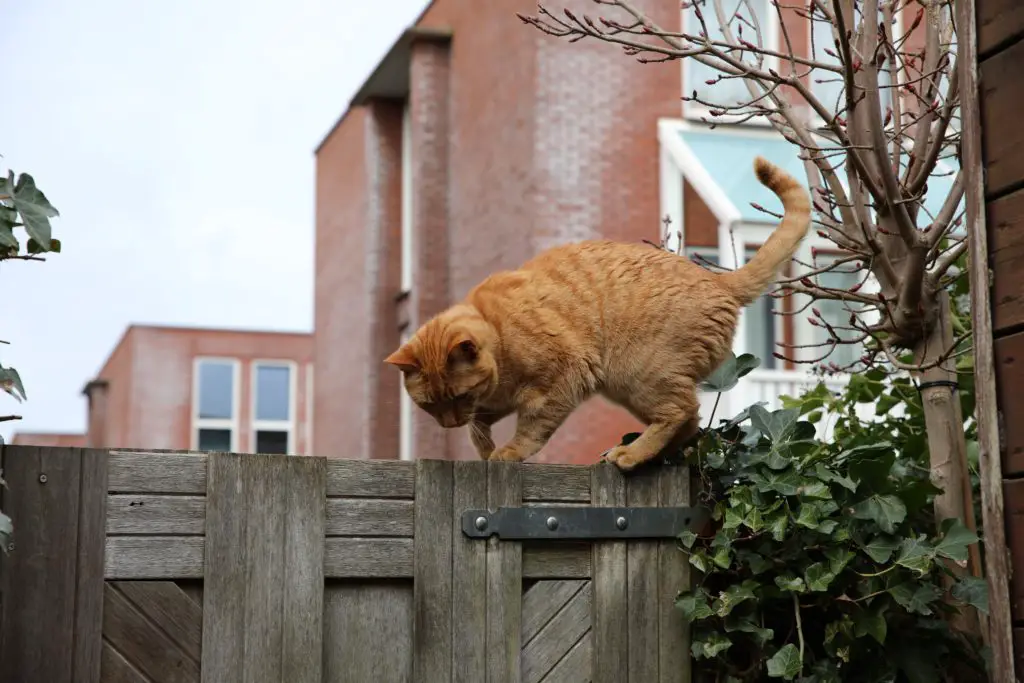If you’re moving and have outdoor cats, it can be stressful trying to find a way to move them. Barn cats, for example, are often untamed or difficult to catch. Or, you may be trying to relocate an outdoor cat to a safer location. How do you move outdoor cats that aren’t easy to handle?
To move an outdoor cat to a new location, you need to put the cat in a carrier or trap it. Then, when you get to the new location, the cat should live in an enclosed space for a few weeks to adjust to its new home. Offering the cat’s favorite food and old toys/blankets can help keep it from running away.
In the rest of this article, we’ll discuss how to safely move an outdoor cat, how to keep them from running away, and how long it’ll take for your outdoor kitty to be comfortable in their new home. Check out the list of the best cat carriers on Amazon now!
Can You Relocate An Outside Cat?
Outdoor cats can typically be moved as long as they aren’t completely feral. While feral cats can sometimes be moved, it’s incredibly difficult and stressful on the cats.
If your kitty is tamed but hates to be inside, they should be easy to move to a new place.
If you’re trying to move a somewhat wild cat in a dangerous situation (like a cat living in a construction zone), the process is difficult, but not impossible.
The efforts are worth it to move the cat somewhere safe.
How To Move An Outdoor Cat To A New Location?
Before you try to herd an outdoor cat into a carrier or trap and haul them to their new home, there are a few things you should consider.
- Determine if the cat should be moved. If the cat you’re trying to move is a part of a feral cat colony and seems happy and healthy, the best option may be to leave them behind. While it’s difficult to imagine, the cat will probably be just fine without you around. There are exceptions, of course, so just make sure that moving the cat is the best choice.
- Get your cat’s favorite old toys/blankets. When you move, make sure to take your cat’s toys, treats and blankets with you. They are familiar objects, and will greatly help your cat feel more at home at a new place.
- Help the cat acclimate to a carrier or trap. Moving is stressful; to make it easier on the cat, try to make the trap or carrier a comfortable place to be. Leave the carrier outdoors where the cat likes to hang out for a couple of weeks prior to your relocation. Put soft blankets and some of the cat’s favorite wet food inside. Eventually, the cat will become more comfortable hanging out in it.
- Update the cat’s vaccines and microchip. If your cat is feral, this step may be impossible. But if your cat is tame, make sure they’re up-to-date on vaccines and preventative health care. That way, your cat will be safer if for some reason they run away when they arrive at their new home.
- Get your cat a collar with your new address and phone number on it. In case your cat does wander off a bit too far, whoever finds it will be able to safely return your kitty to you.
- Cover the carrier or trap while in transit. As another measure to reduce the cat’s stress, cover the carrier or trap with a blanket while you’re on the road. This helps cats to feel safe and can help them relax, making the trip easier on everyone involved.
- Keep the cat contained when you arrive at the new location. If you let the cat out of the carrier into the backyard when you get to their new home, they’ll run away immediately. It’s not because they’re mad at you; they’re just scared and looking for their old home.Keep the cat in the garage, a bathroom, or an enclosed space outside for a few weeks until they are used to their new environment. Let your cat explore their new home slowly, room by room, so they feel comfortable.
- Use a cat leash. A leash is usually more of a dog thing, but you can use them on cats as well. Once you see that your cat feels comfortable inside the house, you can take it outside, so it has a chance to get used to the new neighborhood without getting out of your sight. Continue such walks till you can see your cat looks calm and settled.
- Get your cat an outside cat house. Since it’s been established that your cat prefers being outdoors, you can arrange a comfortable house for it outside. Put a nice soft blanket there and some nice cat food/toys. Your cat will really enjoy that and will most likely consider it a home. It is best if all of those items aren’t new, but rather the ones your cat used in the previous home. They will have your cat’s smell on them and make your cat feel more at ease.
How To Make Sure The Cat Won’t Run Away?
Keeping the cat confined for several weeks is the best way to keep them from running away. Cats are very territorial animals; they grow attached to their homes.
Keeping your cat safely enclosed in a room in your house or garage for a few weeks allows them to relax and think of the new place as their home.
You can also create an enclosed space for your cat outdoors, though this can be difficult. It needs to be escape-proof with fencing on the bottom, sides and top of the enclosure to keep the cat from digging or climbing their way to freedom.
Do everything you can to make the cat’s new home as comfortable as possible. If they’re not very friendly, try to give them space and refrain from cornering or overwhelming them.
The goal is to make your cat as happy as possible so that they want to stick around when they have the option to leave.
If your cat does try to run away when you let them outside, you can try to entice them to come back by leaving their favorite foods near their home.
When the cat gets hungry, the smell of yummy wet food or cooked chicken might convince them to come home again.
How Long Does It Take For An Outdoor Cat To Adjust To A New Home?
Each cat is different, but it typically takes several weeks for a cat to adjust to a new home. If they lived in their previous home for many years, this is especially true. It will take time for the cat to feel at home in their new environment.
Pay attention to your cat’s body language: if they’re still trying to run out the door every time you open it in an attempt to escape, they may not be acclimated to their new home yet.
Be patient and give the cat plenty of time to acclimate to their new home before turning them loose. This will help keep them home safe and sound.
Related Post: How To Move An Older Cat To A New House?(Practical Tips)
Final Thoughts
Moving is always stressful, especially when you have animals to take with you.
By taking your time and letting the cat acclimate to their new place before turning them loose outside, your cat will grow to love their new home and will want to stay close by.

My name is Katie, and I have had different pets at home for as long as I can remember. While I can definitely say I love all animals in general, my heart belongs to cats and dogs. I know you are supposed to choose one or the other, but I could never really decide. I’ve also owned hamsters and fish when I was a kid, and they filled my childhood with very delightful memories.





